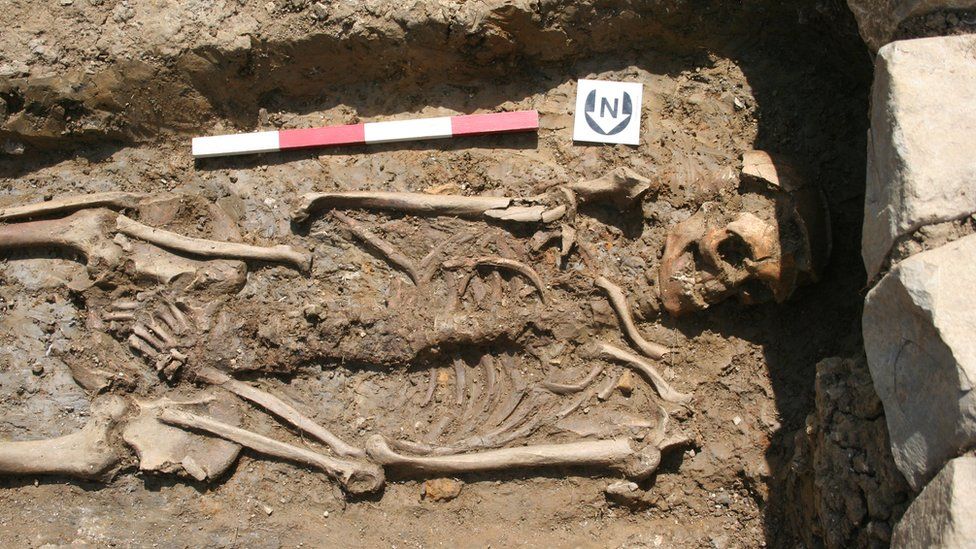Beckery Chapel near Glastonbury 'earliest known UK monastic life'
- Published

Skeletons found at a site, said in legend to have been visited by King Arthur, are the oldest example of monks found in the UK, archaeologists say.
Carbon dating revealed the remains, discovered at Beckery Chapel, near Glastonbury, were from the 5th or early 6th Century AD.
Site director Dr Richard Brunning said: "It's the earliest archaeological evidence we've got for monasticism."
Beckery was excavated in May by the South West Heritage Trust.
The remains of seven individuals unearthed in May were radiocarbon dated.
When the site was originally excavated by Philip Rahtz in the 1960s some 50 to 60 skeletons were found.
Most of them were adult male, apart from two juveniles thought to be novice monks. A female skeleton is believed to have been a visiting nun or patron.
Mr Brunning said the balance of male and female remains and the new scientific evidence meant there was little doubt the burial ground had been a monastic cemetery.
It predates Iona Abbey in Scotland, founded in the late 6th Century, and nearby Glastonbury Abbey, which dates from the 7th Century.
The earliest monks died in the 5th or early 6th centuries AD with burials taking place at Beckery until the early 9th Century AD.
"It would have been very small, we're only talking about a small number of monks there at any one time, effectively it's like a large hermitage", explained Mr Brunning.
"It's on a small island just off Glastonbury so it's surrounded by the wetlands and cut off from normal life, that's probably why it's based there.
"There are a few rudimentary buildings made of wattle and daub, so nothing grand made of stone."
Further tests are planned to establish if the inhabitants were local or came from further afield.
Experts believe use of the site ended when the Vikings invaded later in the 9th Century AD and attacked Somerset.
The chapel is connected to legendary visits by mythical King Arthur, who is said to have seen a vision of the Virgin Mary and the baby Jesus there.
Was Arthur real?
Arthur, as a 5th Century military commander leading the Britons into battle against the invading Saxons, has proved impossible for historians to verify.
The only contemporary source, The Ruin and Conquest of Britain by the British monk and historian Gildas (c.500-70), does not mention Arthur at all.
Some scholars have suggested that Ambrosius Aurelianus, a Romano-British war hero described by the the 6th Century historian Gildas, may have been the real Arthur.
Others have suggested that Lucius Artorius Castus, a 2nd or 3rd Century Roman military commander, may have formed the basis of the Arthurian myth.
However, historians such as Michael Wood believe Arthur was an amalgam of heroic figures from Celtic mythology - a basis that has, nonetheless, barely dented his continued legacy.
- Published22 May 2016
- Published9 June 2011
- Published24 November 2015